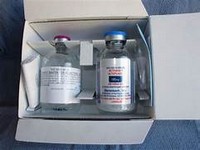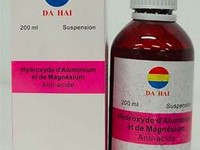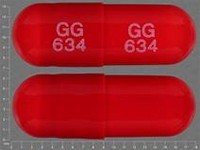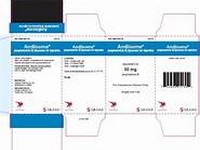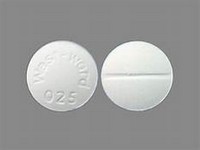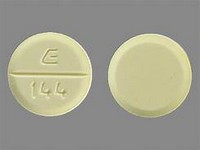oxaliplatin

CLINICAL USE
Treatment of metastatic colorectal cancer in combination with fluorouracil and folinic acidDOSE IN NORMAL RENAL FUNCTION
85 mg/m2; can be repeated at intervals of 2 weeks if toxicity permitsPHARMACOKINETICS
DOSE IN RENAL IMPAIRMENT
GFR (mL/MIN)
DOSE IN PATIENTS UNDERGOING RENAL REPLACEMENT THERAPIES
IMPORTANT DRUG INTERACTIONS
Potentially hazardous interactions with other drugsAminoglycosides: increased risk of nephrotoxicity and possibly ototoxicity with aminoglycosides, capreomycin, polymyxins or vancomycinADMINISTRATION
Reconstition
Glucose 5% or water for injection to give a concentration of 5 mg/mLRoute
IV infusion
Rate of Administration
2–6 hoursComments
Dilute with 250–500 mL glucose 5% to a concentration 0.2–0.7 mg/mLOTHER INFORMATION
No in vitro evidence of cytochrome P450 metabolism. Extensive nonenzymatic biotransformation occurs. Platinum removal is mainly by renal excretion and tissue distribution; platinum metabolites mainly by renal excretion. By day 5, approximately 54% of the total dose was recovered in the urine and <3% in the faeces. Binds irreversibly to red blood cells, which can prolong the half-life of the drugReduced renal clearance and volume of distribution in renal impairmentThere is a 38–44% reduction of platinum clearance in mild-moderate renal impairment (GFR=20–39 mL/min) but no increased incidence of side effects has been reported.
See how to identify renal failure stages according to GFR calculation
See how to diagnose irreversible renal disease
Home
